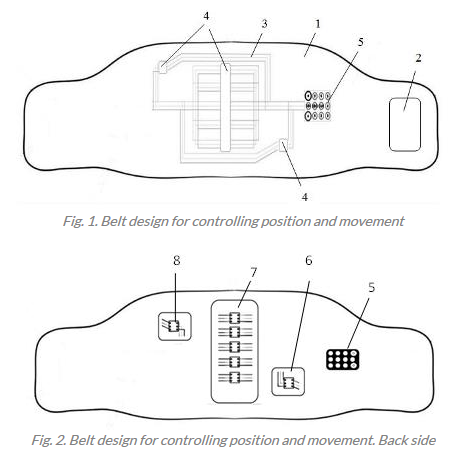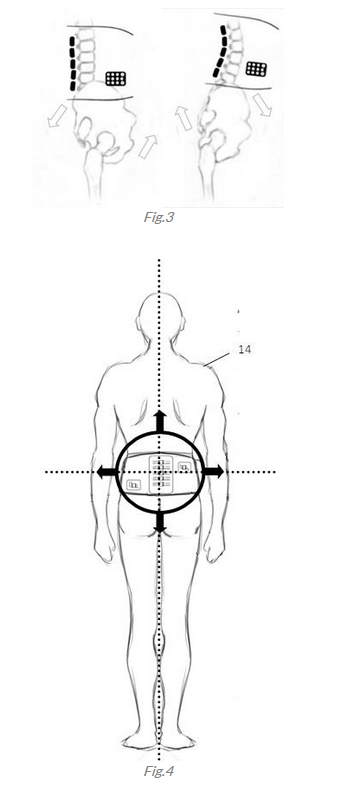Never miss an update from Universidad de Alicante
Create your free account to connect with Universidad de Alicante and thousands of other innovative organizations and professionals worldwide
A device to control the position and movement of the lumbar spine has been developed. This device measures the degree of lumbar spine and trunk rotation as well as changes in position or while performing any type of physical activity. The device is patented and potential partners to license the technology or develop end products based on this technology are sought.
New and innovative aspects
Main advantages of its use
Specifications
Low back pains are one of the most common health problems in modern society. This pain leads to disabilities and to a high use of health systems.
Therapies using exercises (based on stabilisation or enhancement of body trunk) are key factors in prevention and rehabilitation processes.
Lumbar spine control is difficult because of the global and multiplanar movements.
Last year several devices for lumbar spine control have been developed. These are mechanic and electronic devices with pressure sensors that are very interesting but have important disadvantages as: unability to show curvature changes, rotation and steepness changes, some of them need a supporting point, etc.
TECHNICAL DESCRIPTION
A research team of the University of Alicante has developed a device consisting of a belt which is made of an elastic band. In its central part there are five connected sensors, corresponding to the lumbar vertebrae and twos sensors on the band sides corresponding to the back end of the body trunk. The sensors are connected to a common electronic system, including each sensor a gyroscope and an accelerometer.
Grosso modo and as it can be seen in the images there are five sensors in the center part (7) and two sensors in the sides (6 and 8). On one hand, changes in lumbar spine bend will be registered by the sensors located on the lumbar vertebrae and the sacrum.
On the other hand, changes in the inclination and rotation will be mainly regis-tered my side sensors (6 and 8).

1 – Elastic band.
2 – Fastening system
3 – Conexion system
4 – Sensor hollow spaces
5 – Sensor interconexions
6, 7 and 8 – Sensors
13 – Covering box for sensors
The covering box (13) includes all the electronics needed for the good performance of the sensors. There are four sub-systems: control, base system, communication and power system (rechargeable and removable battery). There are some switches like ON/OFF, USB connector (power charge and communications), LEDs, etc.

It is a must to calculate angles for using data obtained from accelerometry. The system needs to distinguish among flexo-extension movements (as it can be seen in Fig. 4) in relation to different angles of lumbar spine, derived from those from the pelvis (Fig. 3).
With this purpose, the device is calibrated in order to know the relative and absolute deviation and angles. This, allows the assessment of the participation of each sensor in the final lumbar spine curve.
Variations in rotation (Fig. 6) and in slope (Fig. 5) are calculated with more accuracy because of the back sensors. These sensors are able to detect changes in the body trunk as well as in the lumbar spine (central sensors). It helps with possible assymetries in the position of the trunk.
In order to have a good feedback of the data registered with the device, some software has been developed: software (Android and iOS based) for PC, Tablets and other devices, etc. Hence, the device can be managed by mobile devices under the Bluetooth protocol, for example. Regarding data processing, a management system has been developed. This system includes management of: users, data logging and online graphics, data input/output (by usb, network, radio, and other communication interfaces), etc.

For placing correctly the device, the specific parts of the lumbar spine have to be located. This location can be made following a designed method based on anatomic palpation of lumbar apophysis and iliac crest.
Applications
Intellectual property status
This technology is protected by a patent application.
Current development status
There is a prototype designed and available
Desired business relationship
Companies for the following cooperation activities are sought.:
Ahead of the current Coronavirus outbreak, Innoget is fully committed to contributing to mobilizing scientific and expert communities to find a real solution to the Covid-19 pandemic. Therefore, we're supporting worldwide calls and programs that could help in any aspects of the coronavirus crisis.
Is your organization promoting or looking for innovation or research initiatives to mitigate the Covid-19 outbreak? Email us at covid19@innoget.com to list them.
Channeled through Innoget's online open innovation network, initiatives in the health, virology, medicine, or novel technologies applied to human health, among others, are listed and disseminated to Innoget members -ranging from hospitals, research institutes, scientists, businesses, and public administrations- and innovation partners worldwide.
Create your free account to connect with Universidad de Alicante and thousands of other innovative organizations and professionals worldwide
Send a request for information
to Universidad de Alicante
Technology Offers on Innoget are directly posted
and managed by its members as well as evaluation of requests for information. Innoget is the trusted open innovation and science network aimed at directly connect industry needs with professionals online.
Need help requesting additional information or have questions regarding this Technology Offer?
Contact Innoget support